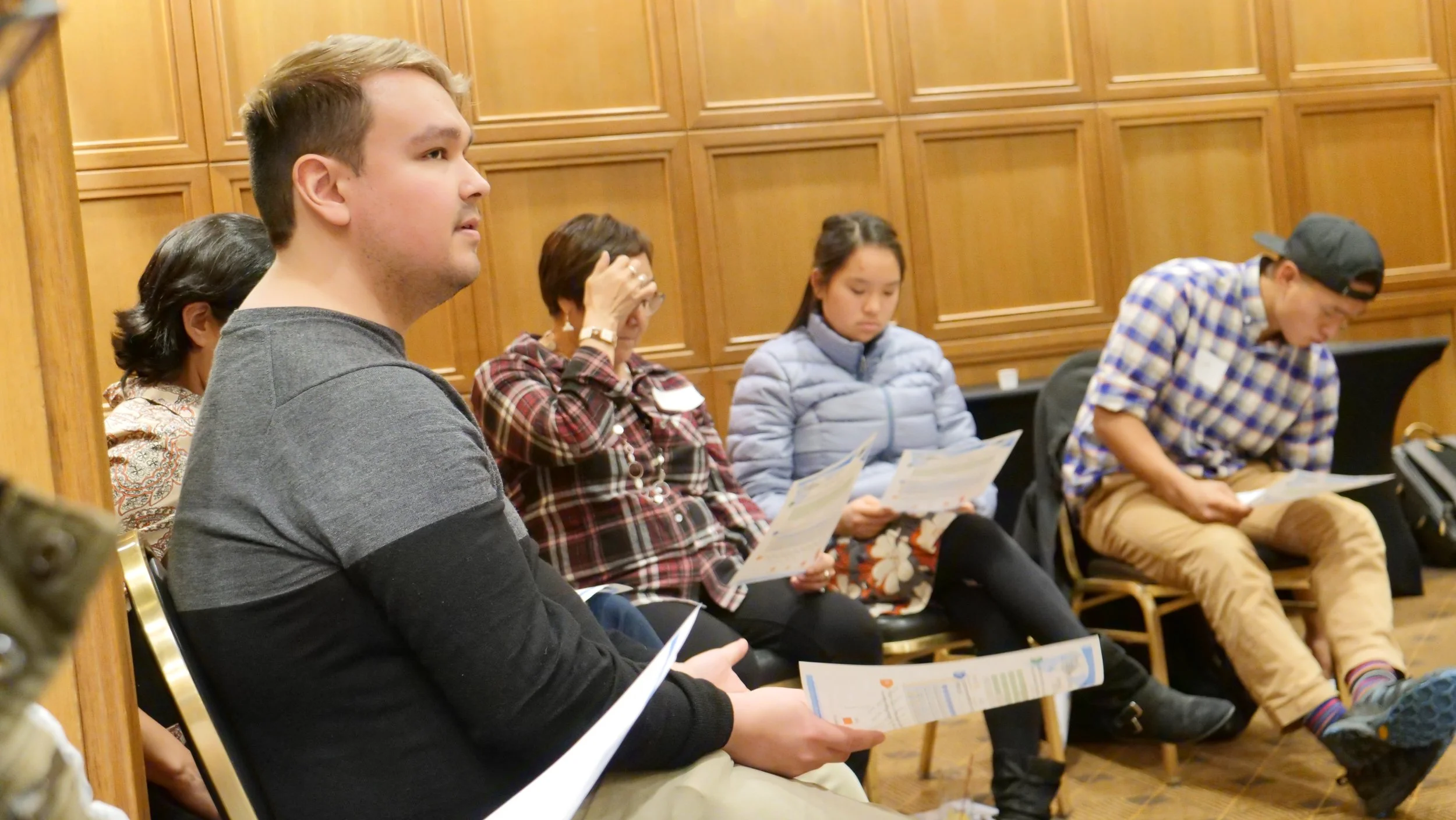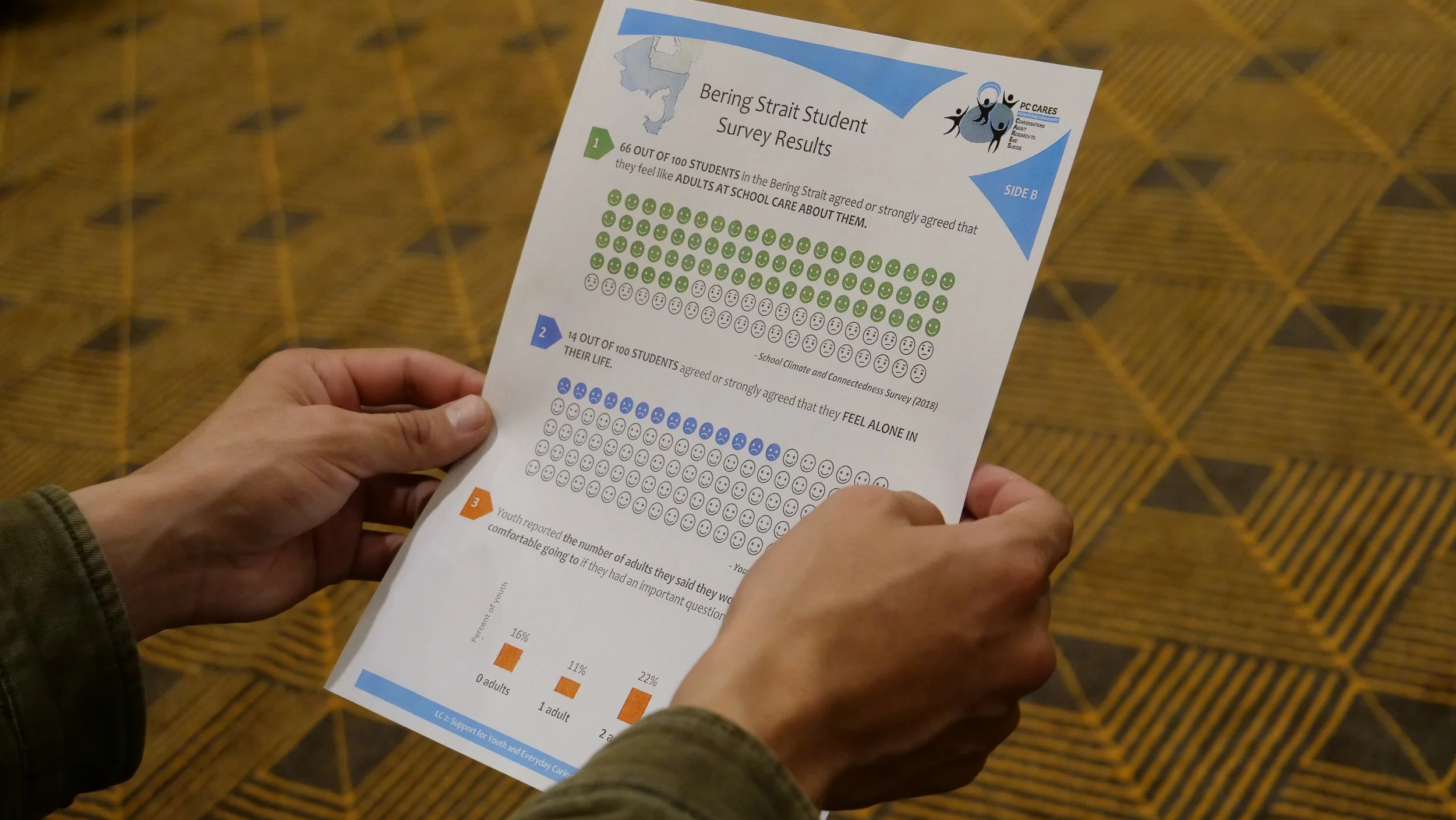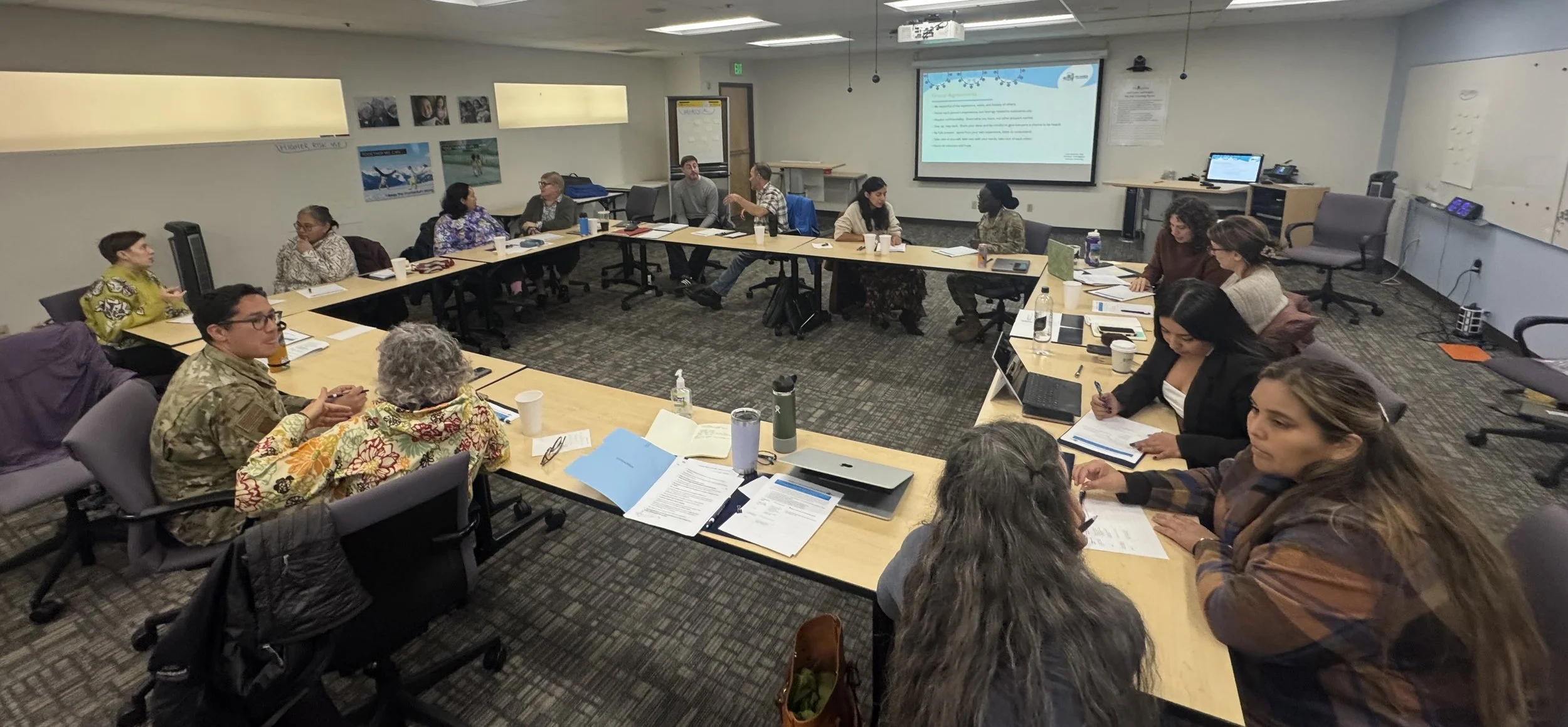The learning objectives of this learning circle are that participants will compare what youth and adults think will prevent suicide, discuss and interpret regional survey results in the context of participants’ own lives, practice and demonstrate active listening, and evaluate the utility of these listening skills for meeting their own goals to support youth.
These survey show that youth think that adults can prevent suicide in the village by talking with them. Regional results from statewide surveys have shown what percentage of students feel like adults at school care about them, what percentage feel alone in their life, and how many adults youth feel comfortable talking to.
Participants have a chance to really practice listening for wellness, which is what many youth in northwest Alaska believe adults can do to prevent suicide in their village. After presenting some basic guidelines for listening, people talk and listen in pairs, sharing a small stressor they are really experiencing in their lives.
Last, participants come up with ideas about how they as individuals, workers, family members, and as a community can use this information to support youth. Participants also talk about what might help them carry out these ideas and why they feel they are important.
References:
Anwar-McHenry, J., Jalleh, G., Donovan, R. J., & Laws, A. (2012). Impact evaluation of the Act-Belong-Commit mental health promotion campaign. Journal of Public Mental Health, 11, 4, 186-194.
Caine, E.D. (2013). Forging an agenda for suicide prevention in the United States. American Journal of Public Health, 103, 5, 822-9.
Donovan, R. J., & Anwar-McHenry, J. (2016). Act-Belong-Commit: Lifestyle Medicine for Keeping Mentally Healthy. American Journal of Lifestyle Medicine, 10, 3, 193-199.
Jalleh, G., Donovan, R.J., James, R. & Ambridge, J. (2007). Process evaluation of the act-belong-commit mentally healthy WA campaign: First 12 months data. Health Promotion Journal of Australia, 18, 3, 217-220.
Mann, J. J., Apter, A., Bertolote, J., Beautrais, A. L., Currier, D., Haas, A., Hegerl, U., ... Hendin, H. (2005). Suicide prevention strategies: A systematic review. The Journal of the American Medical Association, 294, 16, 2064-2074.
School Climate and Connectedness Survey. (2018). Bering Strait School District (BSSD) results. Shared with permission through a data request.
Stuart, J., & Jose, P. E. (2014). The protective influence of family connectedness, ethnic identity, and ethnic engagement for New Zealand Māori adolescents. Developmental Psychology, 50, 6, 1817-1826.
Van Der Feltz-Cornelis, C.M., Sarchiapone, M., Postuvan, V., Volker, D., Roskar, S., Grum, A. T., Carli, V., ... Hegerl, U. (2011). Best practice elements of multilevel suicide prevention strategies. A review of systematic reviews. Crisis: The Journal of Crisis Intervention and Suicide Prevention, 32, 6, 319-333.
Wexler, L. (2013). Looking across three generations of Alaska Natives to explore how culture fosters indigenous resilience. Transcultural Psychiatry, 0, 0, 1–20.
Wexler, L., & Goodwin, B. (2006). Youth and adult community member beliefs about Inupiat youth suicide and its prevention. International journal of circumpolar health, 65(5).
Youth Risk Behavior Survey. (2017). Bering Strait School District (BSSD) results. Shared with permission through a data request.



